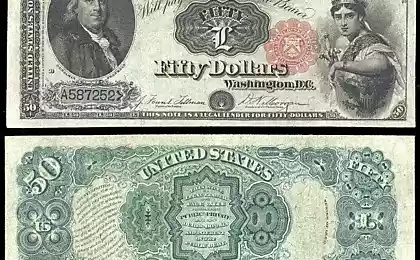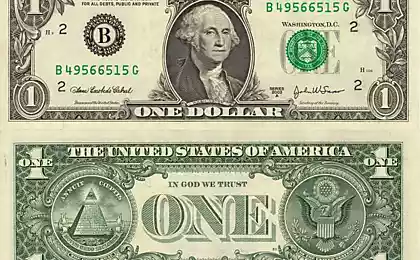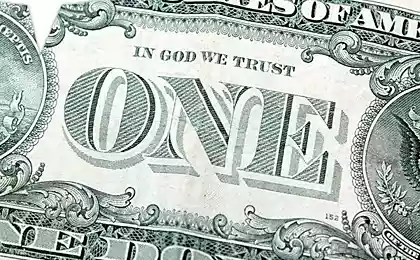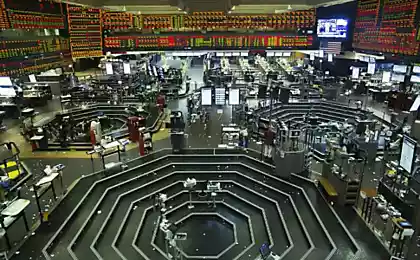629
Antarctic dollar.
In 1996, a group of scientists enthusiasts founded the US Antarctic overseas bank and adjusted release Antarctic dollars to implement a particular project - funding for research aimed at protecting the environment in Antarctica. Denomination, issued a limited edition of 1 March 1996 Antarctic Overseas Bank - 1 (20 000 copies), 5 (20 000 copies), 10 (20 000) 20 (11 000 copies), 50 (2 500 copies), 100 (1 500 copies) dollars.
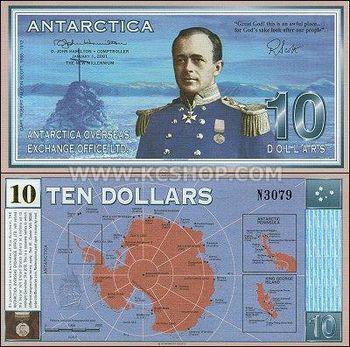
Banknotes are printed on real paper money and have several degrees of protection, as well as serial numbers. Their size is slightly larger than the American or Canadian dollars. Antarctic dollar exchange rate is the exchange rate of the US dollar and could buy all interested since 1996 until 2001. According to the organizers shares, each such banknote can be exchanged for US dollars at face value, then 80% of the accumulated money in hard currency organizers expect to spend on financing research projects, and 20% leave yourself to the reimbursement of expenses incurred. Typically, the money issue is engaged in the state, but in this case the law is not violated, because, unlike the counterfeiters are not reproduced here the real banknotes. And the issue of its own currency is not punishable by law (remember the chips of different values in any casino). But we should not forget that according to international agreements, Antarctica is not the territory of any state, so do not have the right to their own currency. At 5 dollar banknote Antarctic seals, albatrosses and killer whales. In the 10 - dollar banknote depicts a portrait of the British Antarctic explorer Robert Scott, who was killed in the Antarctic, returning from the South Pole, and only 11 miles have not reached the base with its supply of food at the 20-dollar banknote depicts a portrait of the Antarctic South Pole discoverer R. Amundsen ( 1872-1928gg.), and the Norwegian flag on the $ 50 - Building the largest station in Antarctica - Mc Murdo and 100-dollarovoy- ozone hole over Antarctica, which is alarming the world. But the most beautiful is the banknote in 1 dollar. It shows Adelie penguins, which live only in Antarctica.

via alex-v-shmarin

Source:

Banknotes are printed on real paper money and have several degrees of protection, as well as serial numbers. Their size is slightly larger than the American or Canadian dollars. Antarctic dollar exchange rate is the exchange rate of the US dollar and could buy all interested since 1996 until 2001. According to the organizers shares, each such banknote can be exchanged for US dollars at face value, then 80% of the accumulated money in hard currency organizers expect to spend on financing research projects, and 20% leave yourself to the reimbursement of expenses incurred. Typically, the money issue is engaged in the state, but in this case the law is not violated, because, unlike the counterfeiters are not reproduced here the real banknotes. And the issue of its own currency is not punishable by law (remember the chips of different values in any casino). But we should not forget that according to international agreements, Antarctica is not the territory of any state, so do not have the right to their own currency. At 5 dollar banknote Antarctic seals, albatrosses and killer whales. In the 10 - dollar banknote depicts a portrait of the British Antarctic explorer Robert Scott, who was killed in the Antarctic, returning from the South Pole, and only 11 miles have not reached the base with its supply of food at the 20-dollar banknote depicts a portrait of the Antarctic South Pole discoverer R. Amundsen ( 1872-1928gg.), and the Norwegian flag on the $ 50 - Building the largest station in Antarctica - Mc Murdo and 100-dollarovoy- ozone hole over Antarctica, which is alarming the world. But the most beautiful is the banknote in 1 dollar. It shows Adelie penguins, which live only in Antarctica.

via alex-v-shmarin

Source:








